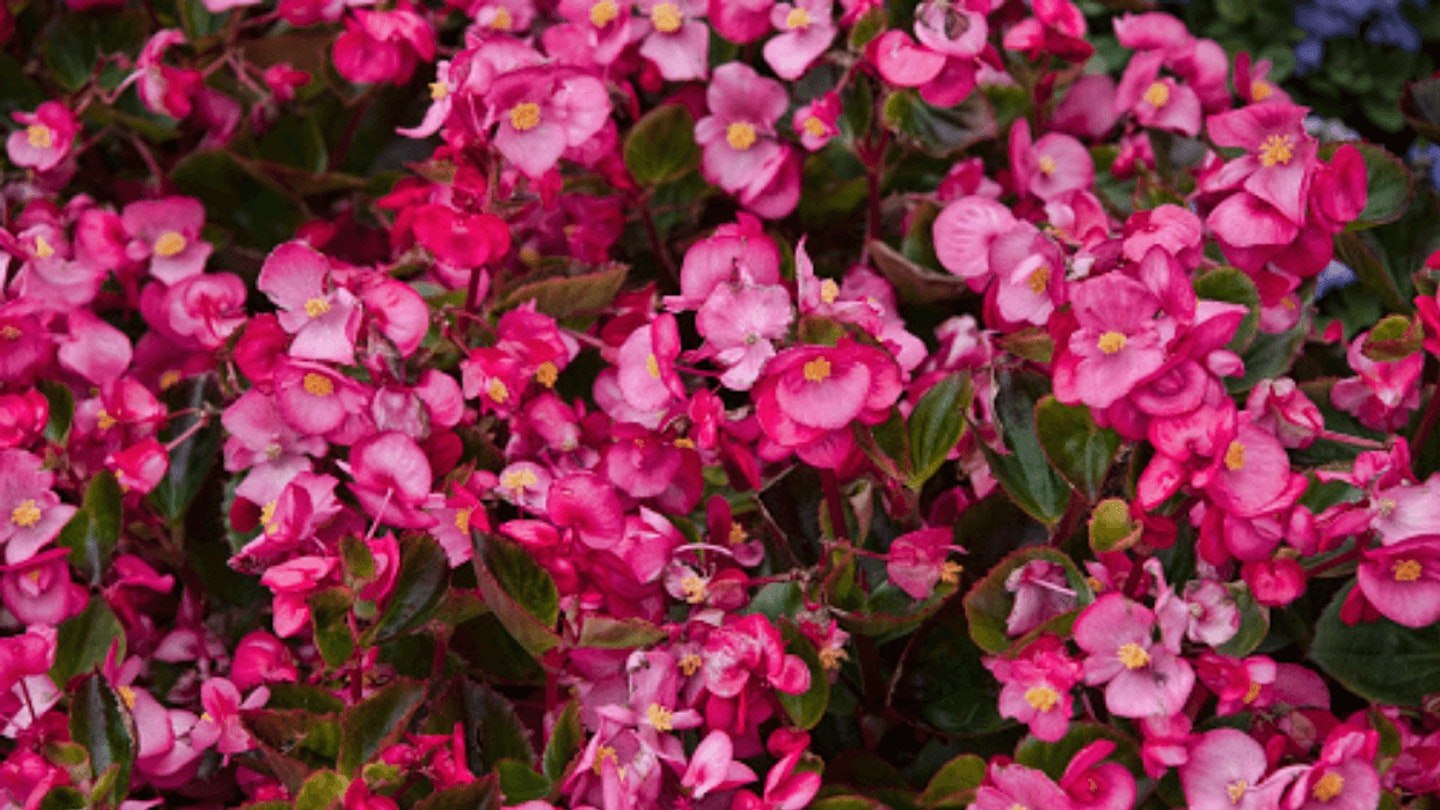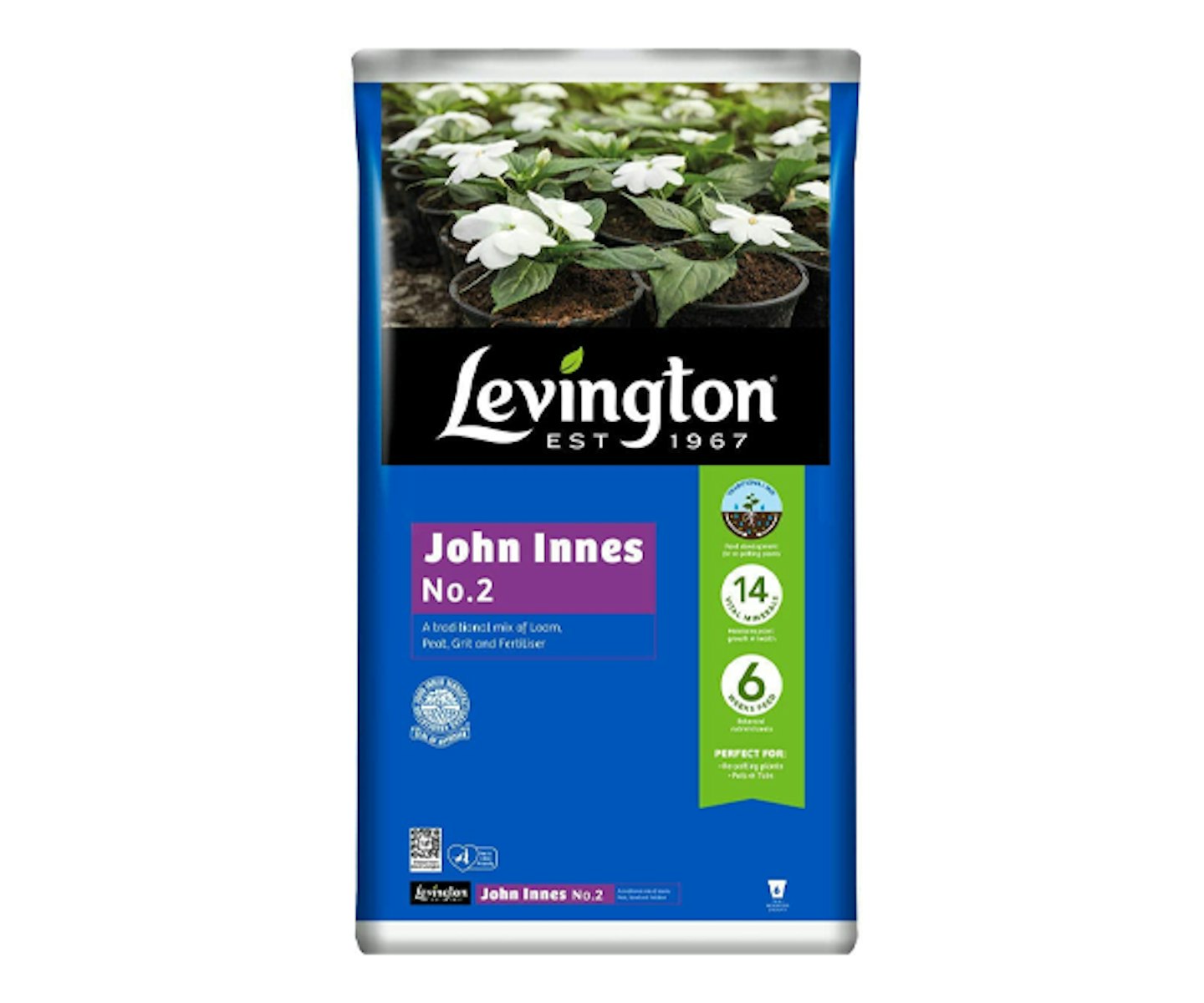Begonia bedding plants are a fantastic choice for beginner gardeners, and bedding plants allow you to get creative and test out new designs each year. It's one of many plants you can plant indoors and outdoors. Bedding plants are particularly versatile and can be planted in beds, hanging baskets, containers and window boxes. Begonia bedding plants come in all shapes, sizes and colours and will quickly fill your containers and hanging baskets with beautiful splashes of colours. They are also very affordable and will transform your outdoor space at very little expense.
What are begonia plants? Begonias grow into big, bushy plants covered in large, frilly flowers that bloom through summer and autumn until the first frost of winter comes in. Many varieties have cascading effects as they spill over the edges of pots and planters, while others are highly scented and bring an abundance of fragrance to a seating area.
Best begonia bedding plants at a glance
• Sweet apricot: Begonia 'Fragrant Falls - Apricot Delight' - View Offer at Dobie's
• Rose pink planters: Begonia 'Nonstop Rose Petticoat' - View Offer at Dobie's
• Immaculate blooms: Begonia Organdy 'Mixed' - View Offer at Suttons
Begonias are striking perennial plants that live for more than two years. Although they do have a reputation for being a little old-fashioned - cottagecore to a tee, there are now new bold varieties that differ from the delicate plants traditionally used. So, at Modern Gardens Magazine, we'd love you to plant some of these flowers yourself: as blooming bedding plants or neatly potted on the patio. We've written a care guide to begonia bedding plants.
Begonia Bedding Plants
Sweet apricot
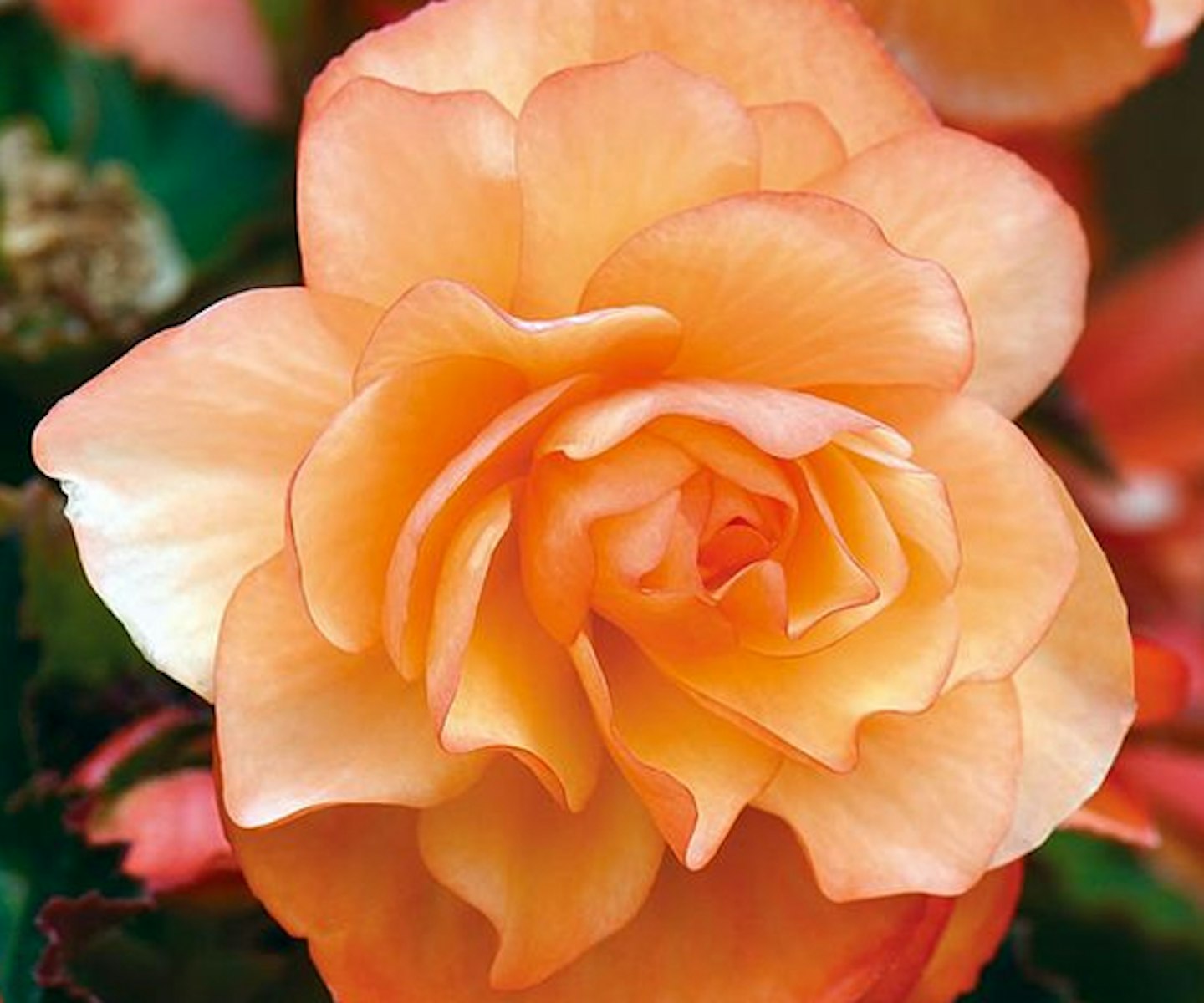
www.dobies.co.uk
Fragrant Falls have stunning colours and a lovely fragrance. With double blooms and fabulous perfume, these showy Begonia 'Fragrant Falls - Apricot Delight' flowers are perfect for planting in baskets, window boxes or flower beds. They come in four or eight jumbo plug plants. It's reliable, weatherproof and adaptable in both sun and shade.
Pros
- Each colour has a different perfume
- Scents develop throughout the day
- Very distinctive fragrance
Cons
- Height and spread may not suit all planters
| Height and Spread | 30 cm |
Pretty in pink
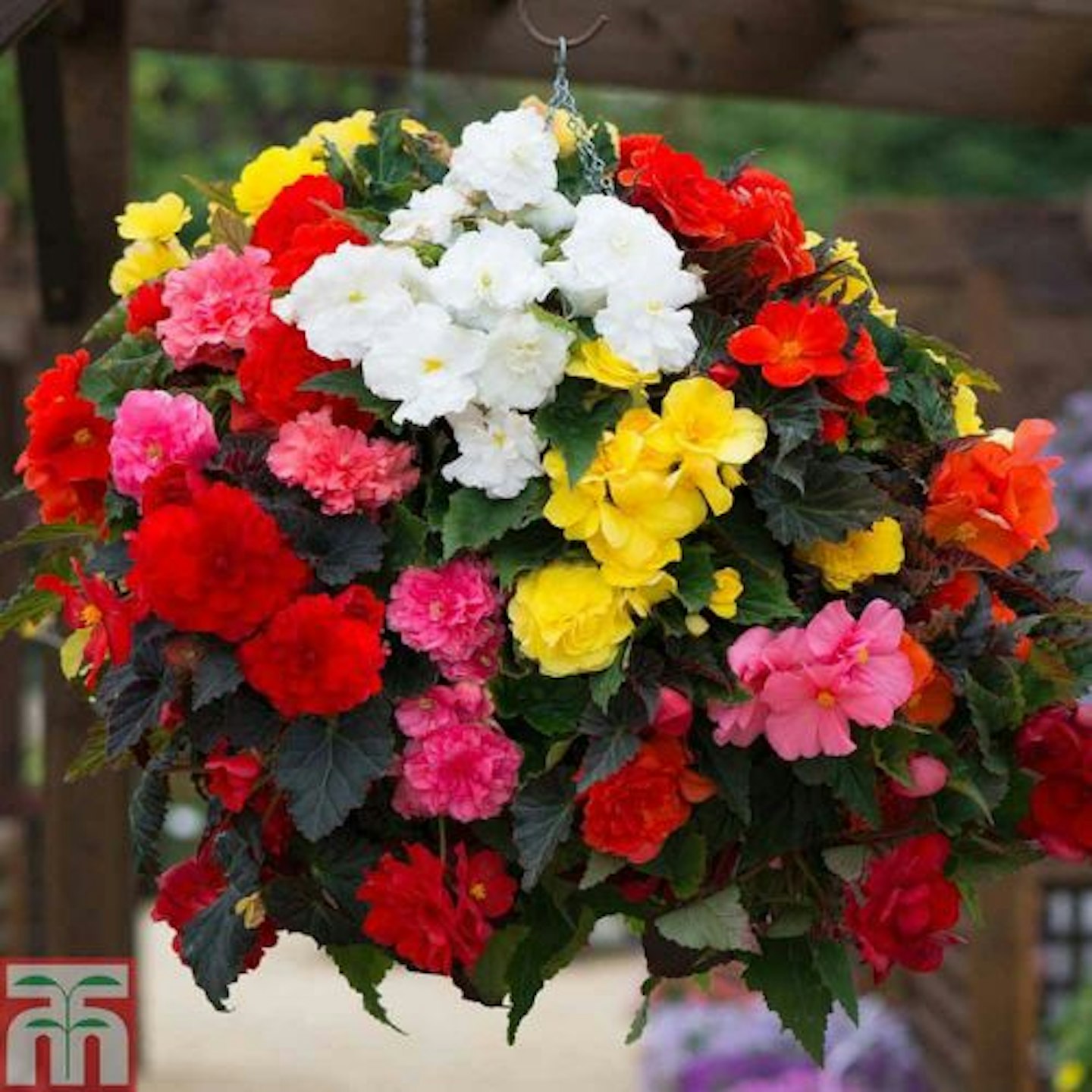
www.thompson-morgan.com
Ideal for containers, hanging baskets, or in the ground in partial shade, these Begonia 'Non-Stop Mixed' can come in orange, deep red, pink, white and yellow. Non-stop flowering and weather-resistant, this type comes in a pack of six. If it's colour that you're after, then look no further. Plus, these will keep flowering well into autumn...
Customer Review: "This one was a beautiful surprise. It grew well but the buds hid under the leaf. Then the bloom opened out distinctively. It is so pretty. I have taken pics for my WhatsApp good morning greetings. I have been complimented on the flowers."
Pros
- Weather resistant blooms
- Flowers well into autumn
- Non-stop flowering
Cons
- Some customers found them a little small
| Height and Spread | 30 cm |
Vibrant orange
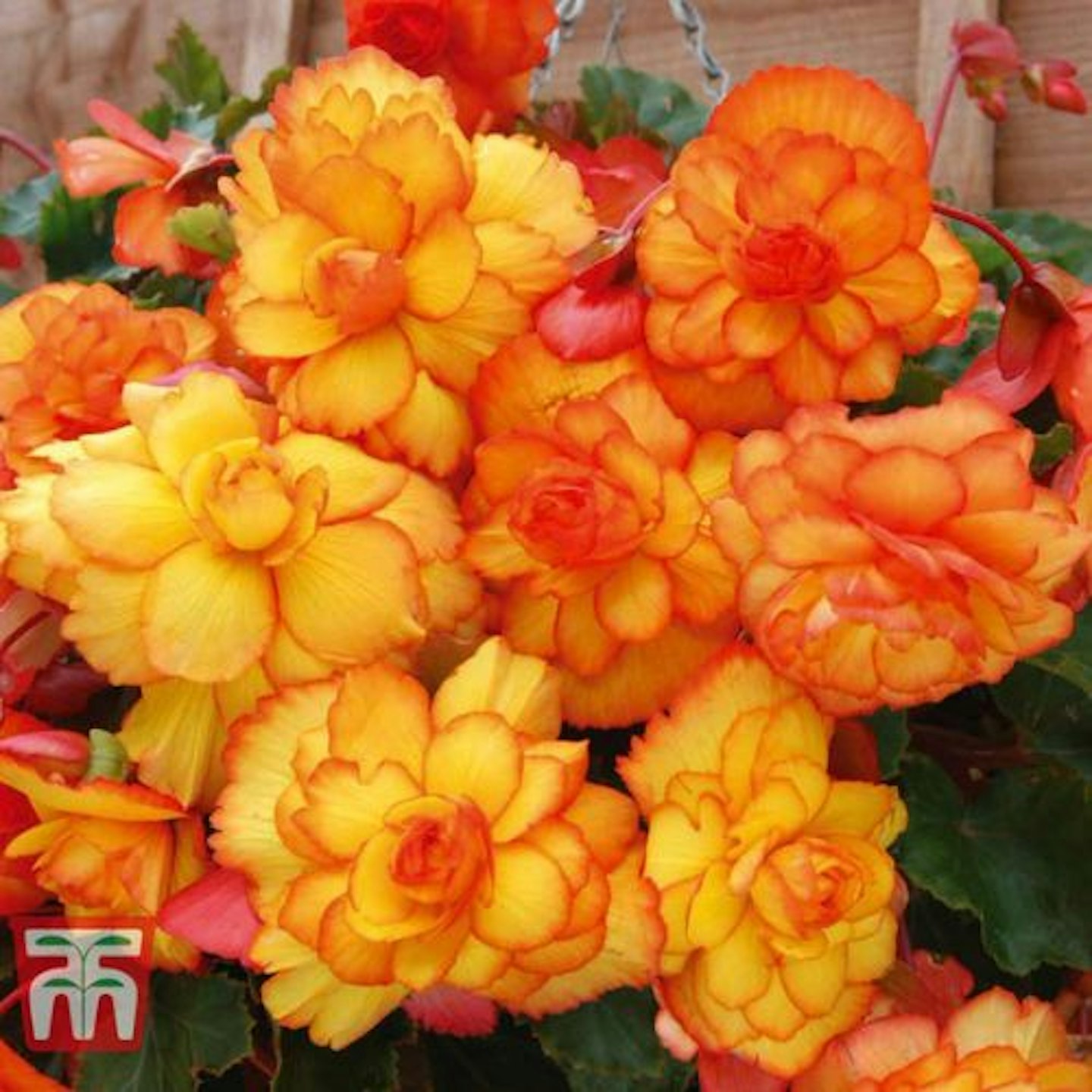
www.thompson-morgan.com
Perfect for a stunning display in containers, window boxes and hanging baskets, the Begonia 'Cascading Fireball' will bathe your patio in amazing fiery red, gold and bronze shades. With this stunning new variety, you will see an abundance of enormous blooms from summer until the first frost. You can even add the brightly-coloured petals to sandwiches or salads for a light lemon taste and crisp texture. How cool is that?
Customer Review: "All planted and in the greenhouse. Hopefully will be able to put outside this year."
Pros
- Amazing fiery red, gold and bronze shades
- Abundance of enormous blooms
- Perfect for a stunning display
Cons
- Some customers said their flowers were small
| Height and Spread | 30 cm |
Rose pink planters

www.dobies.co.uk
These eye-catching Begonia 'Nonstop Rose Petticoat' flowers have a tuberous form and produce a lovely plant with deeply frilled white flowers, light pink markings and deep pink edges. You can deliver the flowers in 12 or 36 plug plants or 15 to 30 garden-ready plants. It flowers beautiful on-trend pinks from June to September.
Customer Review: "Packed well a few were still quite small for garden-ready plants, hope they will grow a bit before I plant them."
Pros
- Most eye-catching variety of begonia
- Deep-frilled cottagecore blooms
- Come in various pack sizes for every space
Cons
- Customers report that some were a little small for the garden
| Height and Spread | 20-30 cm |
Blazing flame
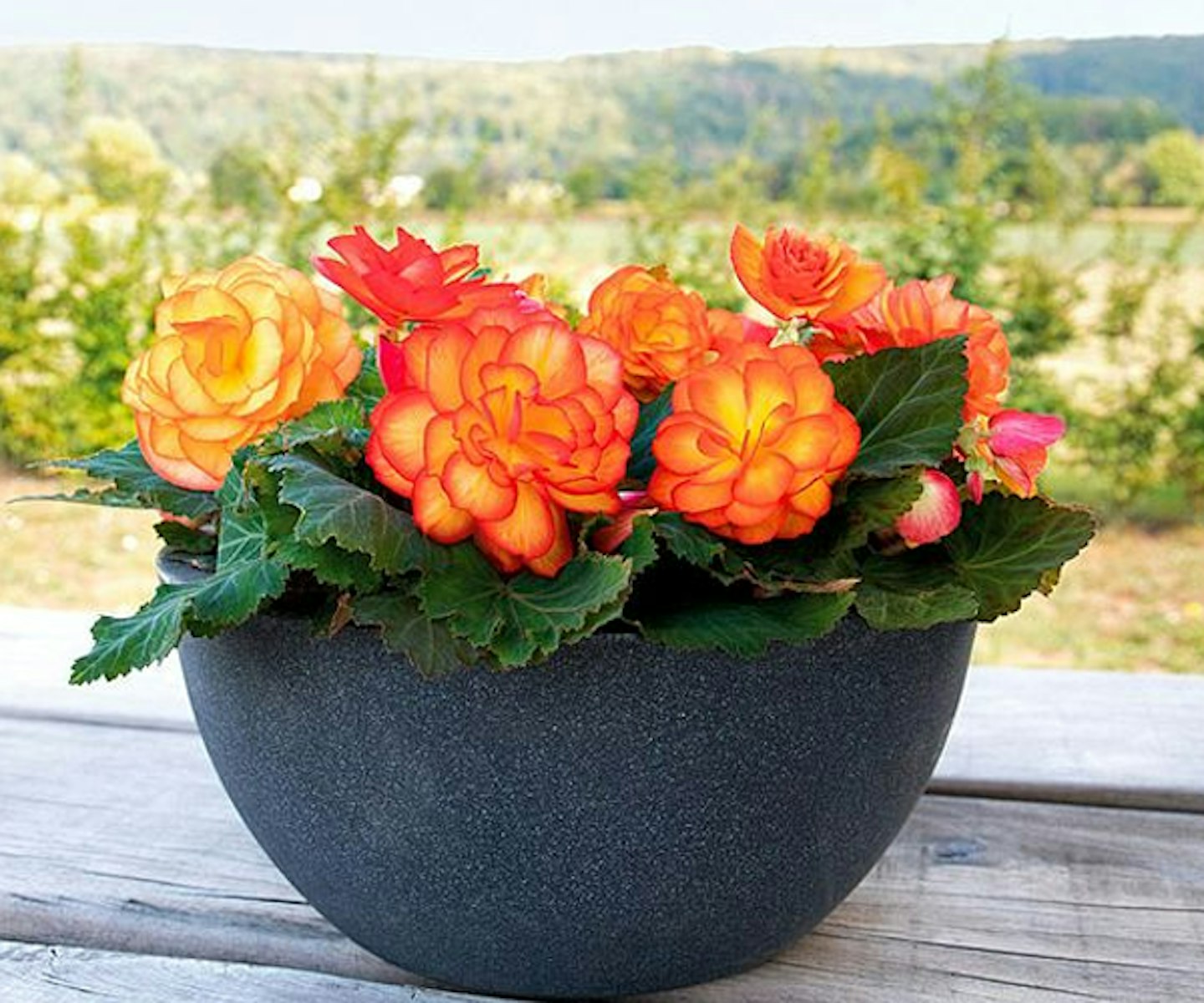
www.dobies.co.uk
You can choose to deliver the Begonia 'Nonstop Fire' flowers in 24 or 72 plug plants or 15 to 30 garden-ready plants. Resembling roses with their packed rows of brilliant petals in shades of gold and orange, these flowers will reach a height of 20-30cm from June to October, with a spread of 30-40cm. They're bushy, upright and large.
Customer Review: "Reliable product. Time after time, a long-lasting season..."
Pros
- Resemble roses with glowing petals
- Constant cheerful notes of summer
- Bushy, upright with large blooms
Cons
- Some customers reported poor delivery
| Height and Spread | 30 to 40 cm |
Immaculate blooms

www.suttons.co.uk
This Begonia Organdy 'Mixed' blooms from July until October and produces bundles of blooms in pink, red, white, and light-yellow shades. This Begonia is excellent for growing in containers and would work well on a patio, balcony or deck. You can choose for it to be delivered in various ways from six, 24, 36 or 72 plug plants or 15 to 30 garden-ready plants. They're neat and their compact growing habit always looks tidy and well-kept, wherever planted.
Pros
- Ideal for low-maintenance bedding
- Grow in a shaded yet sunny spot
- Neat, compact growing habit
Cons
- No customer reviews
| Height and Spread | up to 30 cm |
Snow white blooms
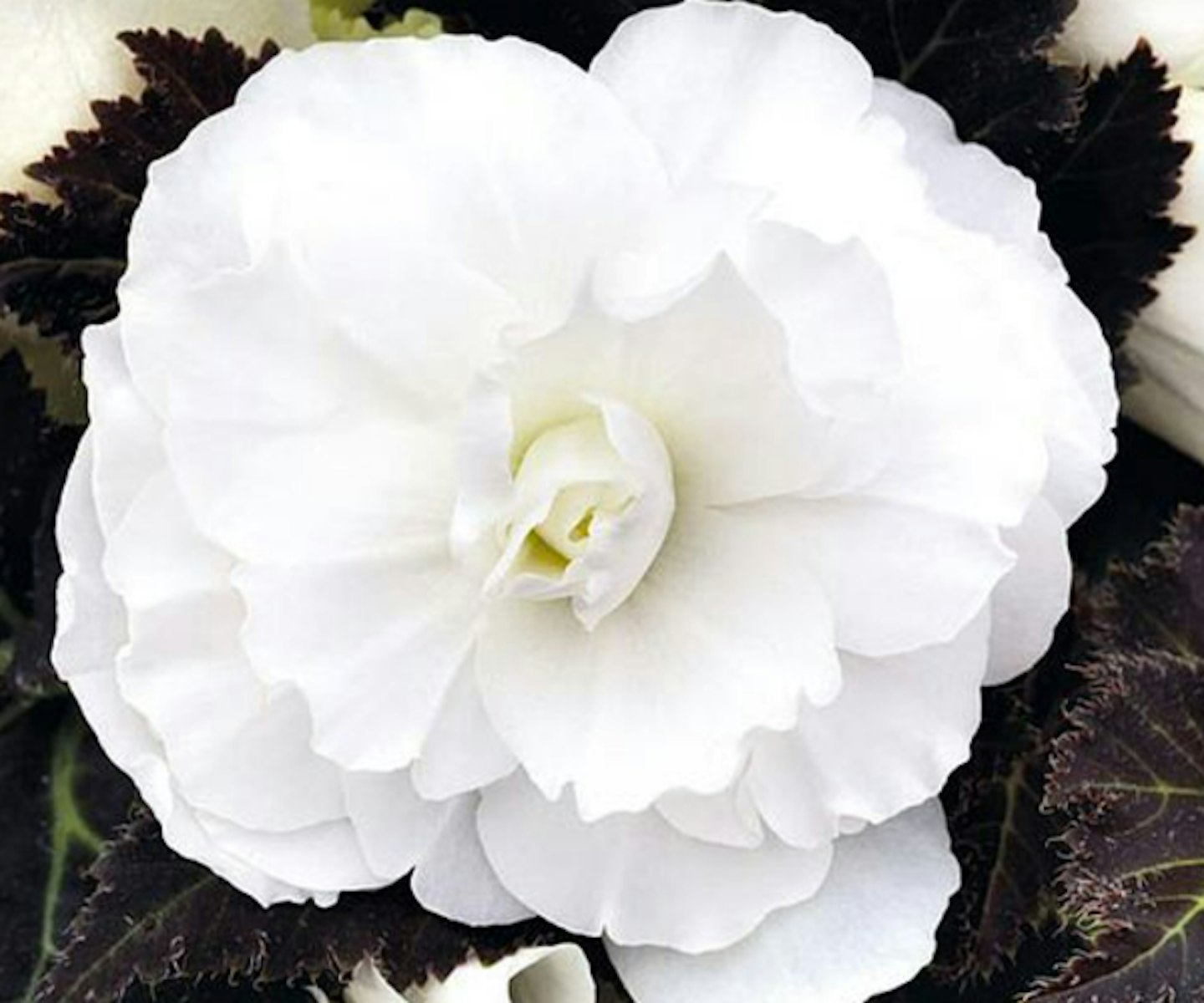
www.suttons.co.uk
These gorgeous Begonia 'Nonstop Joy Mocca White' blooms will continuously flower all summer long and into autumn. The stunning white flowers with attractive dark foliage come in 15 or 30 garden-ready plants. The full, rounded blooms of the Begonia Nonstop will have your other plants fighting for competition! This delightful plant produces hardy flowers in bright and pure Mocca White - and a long flowering period. Suited to a sunny area or semi-shade, this plant can be used to bring interest to your patio, filling up borders or popping into handing baskets.
Pros
- Stunning white flowers
- Flower all summer long
- With attractive dark foliage
Cons
- No customer reviews
| Height and Spread | 20 to 30 cm |
Begonias Care Buys
Here are all the begonia care items we have mentioned throughout the article.
Best compost for begonias
With loam, peat, grit and fertiliser, this unique combination of 14 vital minerals in this Levington John Innes No.2 Compost is perfect for maintaining your plants' growth and health. For re-potting, pots, tubs and young plants, this compost can aid root development, provide the right nutrients for growth and let your borders burst with blooms.
Customer Review: "Very pleased to be able to order this Levington John Innes No. 2 compost - I have used this brand in the past and was unable to find it in my local garden centre. The bags arrived by Royal Mail which was perfect and all bags were in good condition - arrival was very quick."
Pros
- Contains vital minerals for growth
- Balanced nutrient levels for six weeks
- Perfect for re-potting, pots and tubs
Cons
- None we can think of!
| Quantity | 30L |
Best plant food for begonias
This Gro-Sure 6-Month Slow Release Plant Food is ideal for pots, containers, beds, borders and hanging baskets. Just one application feeds your plants with a fast-acting initial burst of energy and then provides six months of continuous feed to provide your plants with additional nutrients for the whole growing season. Ready, set, bloom.
Customer Review: "Product is fantastic, easy to use, either mix in with soil or sprinkle on top. However, the plastic tub isn't the most substantial, mine was cracked on delivery, luckily it was wrapped in a separate bag to contain it all."
Pros
- Provides six months of feed
- Additional nutrients for the season
- Ideal for pots, beds and baskets
Cons
- Some customers report broken boxes
| Quantity | 2kg |
High-potassium feed for begonias
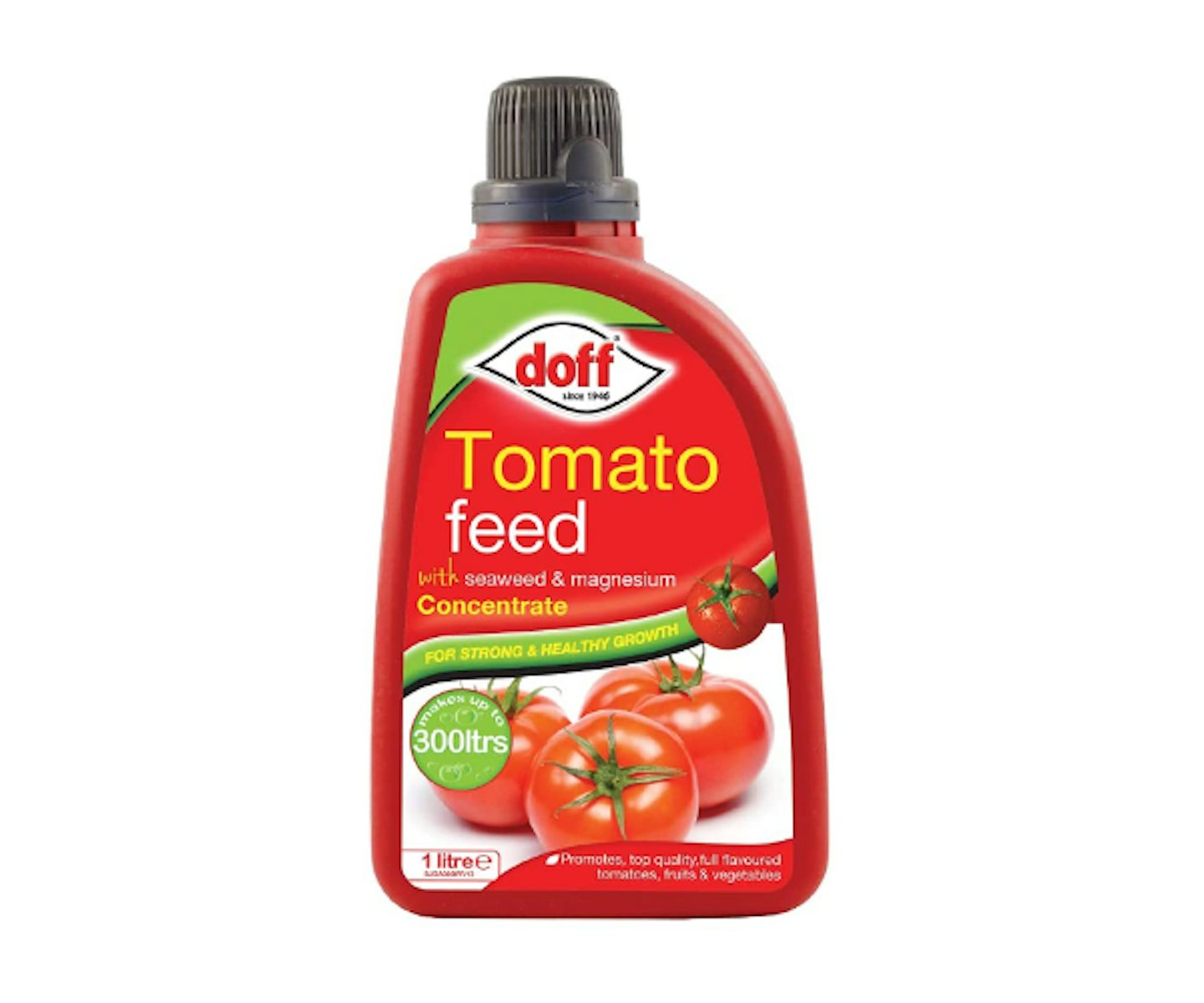
Encouraging strong and healthy growth, the Doff Tomato High Potash Fertiliser will keep your flowers thriving. Make sure to water them regularly and feed them weekly with a high potash fertiliser like this tomato feed. It's been blended with seasonal extracts for healthy growth. It's good value, well-reviewed and a force to be reckoned with.
Customer Review: "Tells you exactly what it’s for and how to use."
Pros
- Well-reviewed and good value
- Keeps flowers thriving
- With seaweed for healthy growth
Cons
- Some customers have received the wrong size
| Quantity | 1L |
Best peat-free compost for begonias
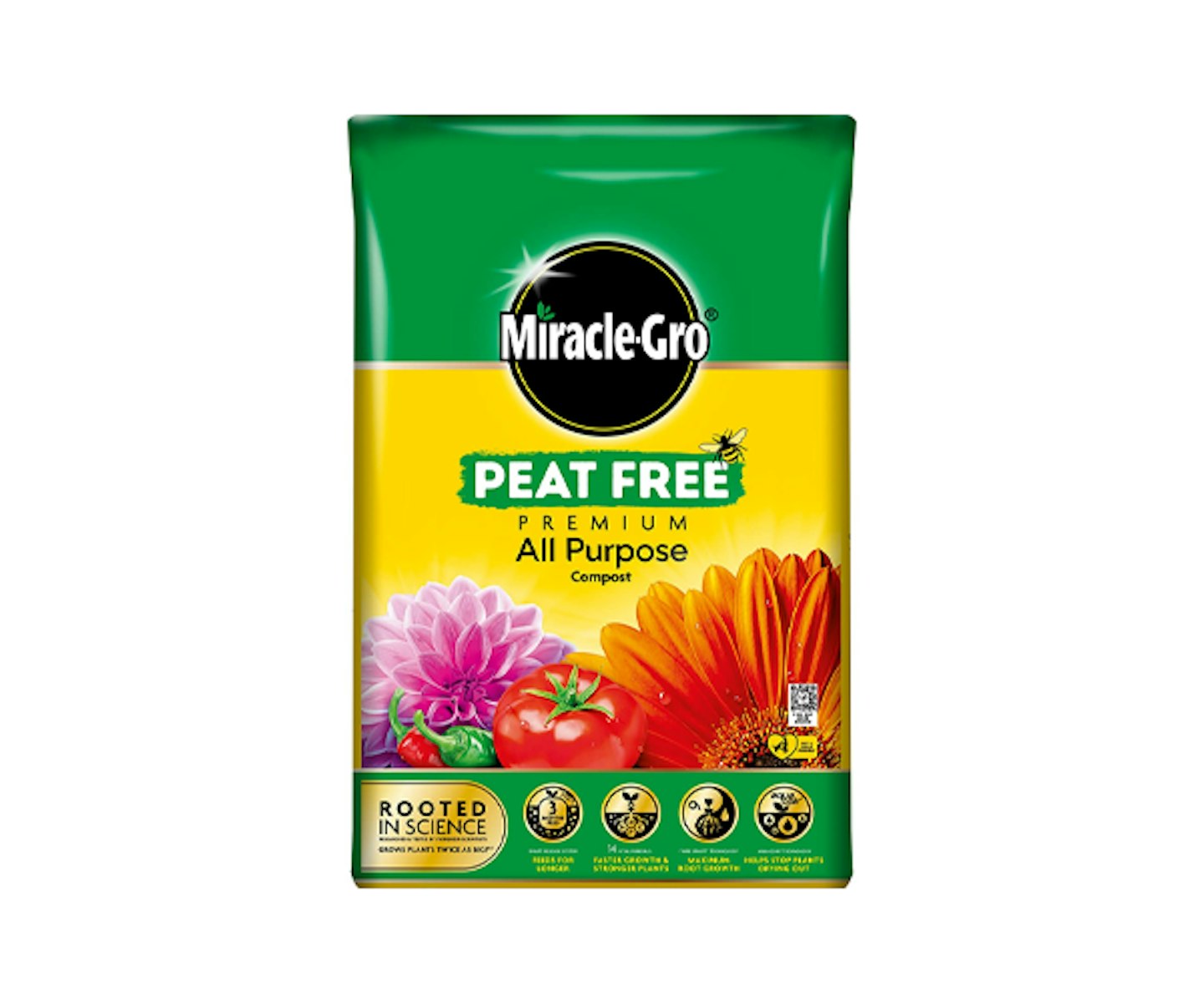
The Miracle-Gro Peat-Free Premium All Purpose Compost feeds plants for three months so itu2019s perfect for growing fruit and veg. With its patented Fibre Smart Technology, it's made up of 100% natural hollow wood fibres for an optimal balance of air and water for strong roots and healthier growth.
Customer Review: "Miracle-Gro Premium All Purpose Compost, PEAT FREE, 40 Litre is a game-changer for any gardener. As a peat-free option, it's both environmentally conscious and incredibly effective. This compost is a dream to work with. Its moisture-retaining properties ensure consistent hydration for your plants, reducing the need for constant watering. The 40-litre bag offers excellent value for your money and goes a long way in the garden. Whether you're a seasoned gardener or a beginner, this premium compost is a must-have for achieving outstanding results and contributing to a more sustainable gardening practice."
Pros
- Feeds for up to three months
- Ideal for growing fruit and vegetables
- For stronger and healthier plants
Cons
- Some customers report a split in the bag
| Quantity | 40 or 50 L |
How to plant begonias
In March or April, you can purchase begonia tubers in a garden centre or from online stores.
According to Gardeners' World, the best way to plant begonias is to 'plant the tubers into individual pots or the hollow side in a seed tray. Plant 2.5cm deep and keep in a warm spot at least 18 degrees centigrade. Once the leaves begin to show, pot on into larger pots filled with John Innes No. 2 compost or peat-free, multi-purpose compost.'
Most of the begonias we have selected are pot-grown plants or plugs. This is a more straightforward method to grow in a greenhouse or sunny windowsill and harden off before planting them out in the garden in May when all the risk of frost has passed before planting outdoors.
In autumn, you can dig up tuberous begonias and keep the tubers in a cool, frost-free spot to preserve them over the winter.
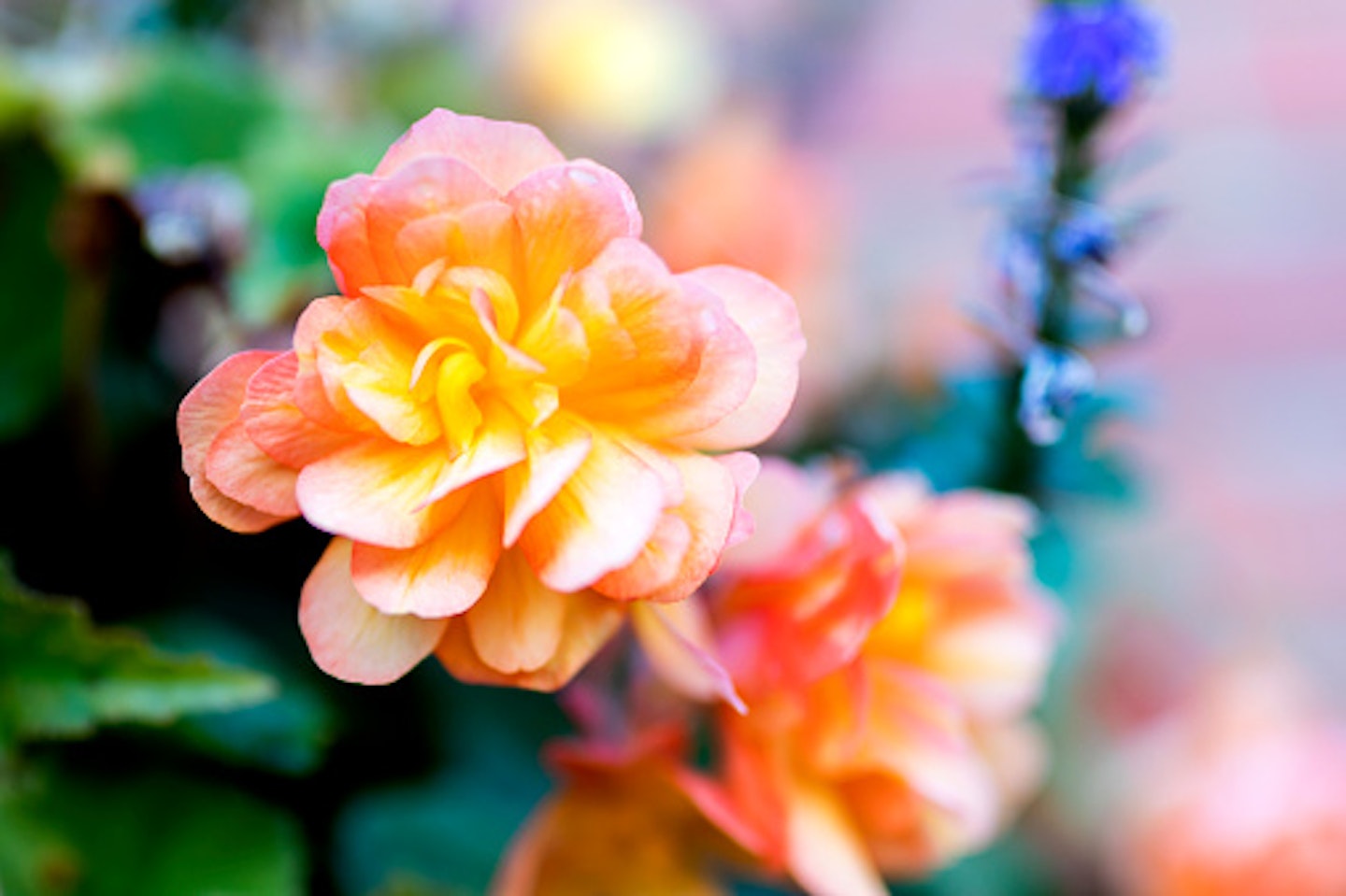
How to take care of begonia bedding plants
Most bedding plants prefer a place in the sun, but a few will thrive in the shade. Grow begonias in peat-free, multi-purpose compost in spotted sunshine or a partially shaded area. Avoid south-facing areas as the foliage can burn in direct sunlight. If you're growing begonias in a greenhouse, some shade may be required to help them thrive.
Tuberous begonias are excellent for growing in pots and hanging baskets. They have relatively brittle stems and heavy blooms, so grow them in a sheltered spot. On the other hand, foliage begonias are best grown as houseplants in the shade.
Plant tubers of tuberous begonias in the springtime. Only plant begonias outside in May, when there is no more chance of frost.
You should water the plants regularly and feed them weekly with a high potash fertiliser like tomato feed. Keep plants well-watered but allow the soil to dry out between waterings – this is especially important for tuberous begonias, which can rot in waterlogged soil. Alternatively, add a slow-release fertiliser pellet to the compost when planting. Do not feed tuberous begonias in September, as the plants should be encouraged to slow down for the year.
What to read next:
Best large outdoor plant pots to give your plants space to thrive
Discover everything you need to know to make your outside space look fantastic, quickly and easily, with hundreds of simple ideas, designer tricks, affordable products and expert advice with a Modern Gardens Membership. Find out more about the benefits of being a Member now.
Ellen Kinsey is a Senior Health & Wellness Product Writer for Modern Gardens, specialising in sustainable living and health. She lives and breathes all things natural health, cooking and nature.
